Do you have a question about the Suzuki VL800C and is the answer not in the manual?
Learn about common motorcycle accidents and defensive riding strategies.
Emphasizes helmet and eye protection importance for rider safety.
Details emergency braking techniques using front and rear brakes.
Advises caution on wet, loose, or rough surfaces and when cornering.
Riding within personal skill boundaries to prevent accidents.
Provides tips for riding safely in adverse weather conditions like rain.
Recommends practicing riding skills in a controlled, non-traffic environment.
Highlights importance of pre-ride checks to prevent breakdowns and accidents.
Discusses hazards from accessories and proper loading techniques.
Guidelines for safely carrying a passenger, including gear and positioning.
Recommends a supplementary handbook for advanced riding tips.
Encourages responsible riding, adherence to laws, and courteous attitude.
Summarizes importance of attention, preparation, and skill for safe riding.
Details recommended unleaded gasoline grades, octane ratings, and types.
Specifies limits for methanol content in gasoline and warnings against high methanol fuels.
Information on using gasoline containing MTBE and its acceptable percentage.
Guidelines for using gasoline with ethanol blends, including content limits.
Recommends specific API and JASO classifications and SAE viscosity for engine oil.
Provides a chart for selecting appropriate SAE engine oil viscosity based on temperature.
Explains the JASO T903 standard for selecting engine oils for motorcycles.
Warns against 'ENERGY CONSERVING' oils due to potential impact on engine/clutch.
Specifies recommended SAE gear oil and API classification for the final drive.
Details the correct mixture ratio and type of coolant for the cooling system.
Emphasizes using only distilled water for mixing engine coolant.
Diagrams identifying key components on the handlebars and motorcycle.
Information about motorcycle keys, including identifying numbers and key storage.
Explains the different positions (OFF, ON, LOCK, P) of the ignition switch.
Details the functions of various indicators and gauges on the instrument panel.
Description of clutch lever, headlight flasher, and dimmer switches.
Explanation of the engine stop switch and front brake lever operation.
Instructions on opening, closing, and refueling the fuel tank safely.
Details the operation of the 5-speed gearshift lever for upshifting and downshifting.
Explains how to operate the rear brake pedal and its effect on the brake light.
Location and operation of the helmet holder.
Operation of the side stand and its ignition interlock system.
Guide to adjusting the rear suspension spring pre-load settings.
Guidelines for maximum throttle opening and varying engine speed during break-in.
Instructions for properly breaking in new tires to ensure performance and safety.
Importance of the first service (1000 km) for engine mating and performance.
Details essential checks before riding for safety and proper motorcycle condition.
Procedure for starting the engine when cold, warm, or hard to start.
Steps for starting from a stop, shifting gears, and avoiding hazards.
Guidance on selecting the most suitable gear and recommended shift points.
Techniques for climbing and descending hills safely using gears.
Procedure for stopping the motorcycle, downshifting, and parking safely.
Advice for passengers on holding on, leaning, and avoiding contact with hot parts.
Guidelines for selecting, installing, and using accessories safely and effectively.
Information on Gross Vehicle Weight Rating (GVWR) and proper cargo placement.
Advises against modifications that may render the vehicle unsafe or illegal.
Provides a detailed schedule for periodic inspections and maintenance tasks.
Lists tools and describes lubrication points for periodic maintenance.
Information on battery type, charging rates, and removal procedures.
Instructions for removing, inspecting, and cleaning the air cleaner element.
Details on spark plug types, inspection, gap adjustment, and replacement.
Procedure for checking engine oil level and changing engine oil and filter.
Instructions for adjusting the throttle cable play for proper response.
Guidance on adjusting clutch cable play for proper engagement and disengagement.
Procedure for checking and adding engine coolant to the reservoir.
Steps for changing the final gear oil and ensuring correct level.
Covers brake fluid, pads, pedal adjustment, and lining wear limits.
Details tire pressure, condition, types, and replacement guidelines.
Procedure to check the proper operation of the side stand interlock system.
Step-by-step guide for removing and reinstalling the front wheel.
Detailed instructions for removing and reinstalling the rear wheel assembly.
Instructions for replacing headlight, turn signal, and license plate bulbs.
Location of fuses, spare fuses, and a list of fuse functions and ratings.
Diagnosing issues when the engine won't start or starts poorly.
Troubleshooting steps for when the engine stalls during operation.
Recommendations for servicing and preparing the motorcycle for extended storage.
Steps to take to prepare the motorcycle for use after storage.
Tips and methods for preventing corrosion on the motorcycle's surfaces.
Detailed steps for washing the motorcycle, including cautions for water spray.
Details of the warranty coverage for emission control systems and useful life.
Information on federal laws prohibiting tampering with noise control devices.
Identifies the locations of the frame and engine serial numbers for documentation.
Instructions on how to report safety defects to NHTSA and American Suzuki.
Explanation of the motorcycle's on-board computer systems and data monitoring.
Guidance on locating and understanding warning labels on the motorcycle.
Table of physical dimensions and weight specifications for the motorcycle.
Detailed engine specifications including type, bore, stroke, and displacement.
Specifications for clutch, transmission, gear ratios, and drive system.
Details on suspension, steering, brakes, and tire sizes.
Information on ignition, battery, generator, fuses, and lights.
List of fluid capacities for fuel tank, engine oil, gear oil, and engine coolant.
| Brand | Suzuki |
|---|---|
| Model | VL800C |
| Category | Motorcycle |
| Language | English |

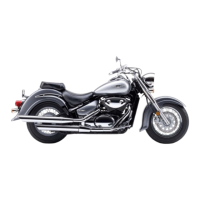
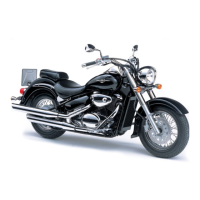
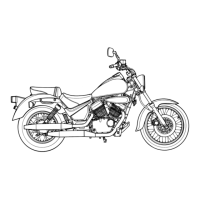
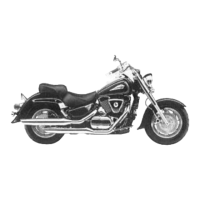
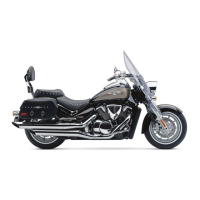



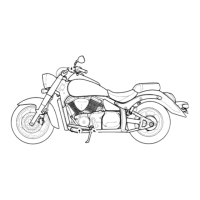


